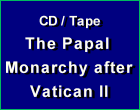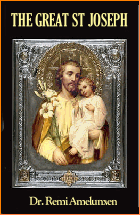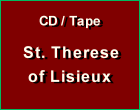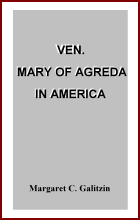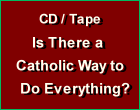Catholic Customs
 |
 |
 |
 |
 |
 |
 |
Unease Stalks German Christmas Markets
They started in the Middle Ages, as many marvelous and good things often did. In the weeks of the liturgical season of Advent, markets were held in the public squares in front of the main churches in the villages and cities of the German-speaking part of Europe. It was a time for gathering in supplies for the winter, selling special Christmas goods, caroling and conversing with neighbors.
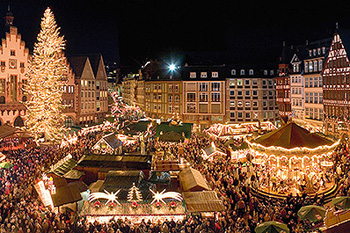 Soon the December fairs were known as Weihnachtsmarkts, Christmas markets. Some took the name Christkindlesmarkt to honor the Christ Child, the center of these festivities. Later, one of the oldest and most famous, the Nuremberg Christkindlesmarkt , introduced the custom of officially opening the season with a “Christ Child“ dressed in white and golden robes who recited a poem on the balcony of the Church of Our Lady. At the Augsburg Christkindelsmarkt, still today, 24 singings angels appear on the beautiful façade of the City Hall and transform the building into a huge Advent calendar as one of many attractions that draw a million visitors a year.
Soon the December fairs were known as Weihnachtsmarkts, Christmas markets. Some took the name Christkindlesmarkt to honor the Christ Child, the center of these festivities. Later, one of the oldest and most famous, the Nuremberg Christkindlesmarkt , introduced the custom of officially opening the season with a “Christ Child“ dressed in white and golden robes who recited a poem on the balcony of the Church of Our Lady. At the Augsburg Christkindelsmarkt, still today, 24 singings angels appear on the beautiful façade of the City Hall and transform the building into a huge Advent calendar as one of many attractions that draw a million visitors a year.
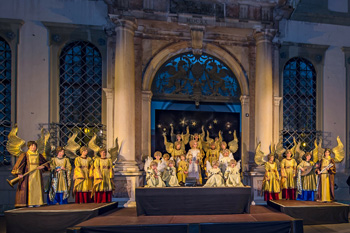 Over the centuries, with the start of each Advent, these Christmas markets continued to crop up in almost every German town, large or small. Larger cities like Berlin can host as many as 40, each with its own special attractions and charm. The town squares glow with strings of light and the locals gather in the crisp cold air to listen to carols and brass bands, drink Glühwein (hot mulled wine), apple cider and beer, and eat bratwurst, gingerbread and marzipan. Vendors peddle stöllen – the famous German Christmas sweet bread – and cookies, tree decorations, wooden toys and knick-knacks that run from the simplest wood star to the most elegant hand-blown glass angel. Magical merry-go-rounds like the one in the medieval town of Rothenburg invite grown-ups to become children again in squares transformed into winter wonderlands.
Over the centuries, with the start of each Advent, these Christmas markets continued to crop up in almost every German town, large or small. Larger cities like Berlin can host as many as 40, each with its own special attractions and charm. The town squares glow with strings of light and the locals gather in the crisp cold air to listen to carols and brass bands, drink Glühwein (hot mulled wine), apple cider and beer, and eat bratwurst, gingerbread and marzipan. Vendors peddle stöllen – the famous German Christmas sweet bread – and cookies, tree decorations, wooden toys and knick-knacks that run from the simplest wood star to the most elegant hand-blown glass angel. Magical merry-go-rounds like the one in the medieval town of Rothenburg invite grown-ups to become children again in squares transformed into winter wonderlands.
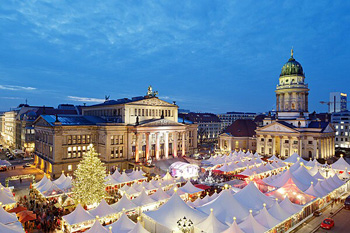 Tourists come in droves, carefully studying the traditions of the areas to determine which markets they want to visit. For fans of gingerbread, it is the market at Aachen; the Erzebbirge mountain range are famous for their handmade wooden crafts. Dresden's Striezelmarkt is famous for its stöllen or Christstöllen, said to have originated in that city, and its old-world decorations: nutcracker figures, Christmas candle pyramids, Räuchermänner (“smoking men” or incense burners) and arch-shaped Schwibbogen candleholders.
Tourists come in droves, carefully studying the traditions of the areas to determine which markets they want to visit. For fans of gingerbread, it is the market at Aachen; the Erzebbirge mountain range are famous for their handmade wooden crafts. Dresden's Striezelmarkt is famous for its stöllen or Christstöllen, said to have originated in that city, and its old-world decorations: nutcracker figures, Christmas candle pyramids, Räuchermänner (“smoking men” or incense burners) and arch-shaped Schwibbogen candleholders.
Munich's Kripperlmarkt sells a vast array of ornately carved crib figures – big enough for a cathedral or small enough for your mantelpiece. In the village of Esslingen, felt-makers, tinder-makers, blacksmiths, basket-makers and glass-blowers – all in medieval garb – demonstrate their crafts and offer their wares.
Common to all the German open air markets is, of course, the good German order and cleanliness. Pervading the whole is a sparkling but calm spirit of Weihnachtsmarkt – the joy to be together. Towns folk gather to eat, drink, gossip and make merry with their neighbors with no hurry to go home; tourists come to marvel, setting aside modern anxieties to return to a more innocent past when man had faith and Advent represented a time of joyful expectation.
In short, the Germans and their Christmas markets are inseparably bound, and both locals and tourists flock to them in great numbers.
A changed atmosphere
Throughout Germany fear of Islamic terrorist attacks is growing. After a record influx of more than a million immigrants into Germany in 2015, most coming from Syria, Afghanistan and Iraq, the country saw a surge in Muslim crime, many of which go unreported, coupled with ongoing reports of threats of terrorist activity. Rumors have abounded for the last two years of a wave of Christmas attacks planned by the so-called Islamic State and al-Quaeda. The risk is considered permanently high. According to a recent survey, 61% of the citizens fear that there will be attacks in Germany in the near future.
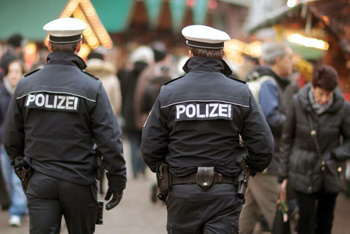 The U.S. has, in fact, issued a stark warning to its citizens that Europe is facing a “heightened risk of terror attacks, particularly during the holiday season.” Be on guard, it continued, at churches, holiday events and outdoor Christmas markets.
The U.S. has, in fact, issued a stark warning to its citizens that Europe is facing a “heightened risk of terror attacks, particularly during the holiday season.” Be on guard, it continued, at churches, holiday events and outdoor Christmas markets.
So, to assure the safety of the people, video cameras have been installed throughout the Christmas markets in Germany. Security personnel use cameras to track the market while it is open. The police are present in uniform and in civilian clothing. Strict entry points are maintained and suspicious bags are inspected. Backpacks, suitcases, baby trolleys are not welcome and, in some cases, forbidden. The Berlin police does not comment on other measures it is taking.
What is certain is that, for the first time in centuries, a dispirited air of angst hovers over the German Christmas markets. Some frequenters say they will only attend in daylight hours; others are defiant, insisting they will not let the Muslim threat stop them from doing what they have always done at Christmas. Nonetheless, the nervousness is palpable, a nervousness that was never present in the past and that is raising the ire of many Germans. Despite the media's insistence that the heightened security has nothing to do with the refugee crisis, ordinary Germans aren't falling for the story.
“Why should I be afraid to come with my children to the Christmas market,” one angry woman asked. “It never happened before. But now I have to be worried about safety because of Muslim terrorists in my backyard.”
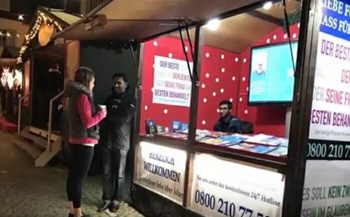 In fact, when Muslims went so far as to set up an information stand at a booth in the Rüdesheim Weihnachtsmarkt this year, the town people revolted. “This does not belong at a Christmas market!” said one outraged citizen, noting that Muslims do not believe Christ is the Savior or celebrate Christmas. Despite pleas for tolerance from the town mayor, after a heated town meeting in response to anti-Islam marches through the streets, the Muslims were asked to vacate because of the “potential danger due to the violent public reactions.”
In fact, when Muslims went so far as to set up an information stand at a booth in the Rüdesheim Weihnachtsmarkt this year, the town people revolted. “This does not belong at a Christmas market!” said one outraged citizen, noting that Muslims do not believe Christ is the Savior or celebrate Christmas. Despite pleas for tolerance from the town mayor, after a heated town meeting in response to anti-Islam marches through the streets, the Muslims were asked to vacate because of the “potential danger due to the violent public reactions.”
Police, check points, cameras, warnings – it is Big Brother at the Christmas Market – and clearly, this Christmas many German people are fed up. And rightly so, I would say. The Christmas markets rose organically throughout the medieval duchies as an expression of the German Christmas spirit, each communicating the particular charm and character of the regional people. Despite the sometimes crass commercialism and modern rides, the Weihnachtsmarkts continued the rich traditions.
When, however, an inorganic element enters the picture – refugees uninterested in assimilating the German culture or adopting their customs – it is quite comprehensible that the Germans would consider the new hordes inside their borders an unwelcome invasion.


Christmas Market in Frankfurt

The Musician Angels of Augsburg

Berlin Christmas Market
Munich's Kripperlmarkt sells a vast array of ornately carved crib figures – big enough for a cathedral or small enough for your mantelpiece. In the village of Esslingen, felt-makers, tinder-makers, blacksmiths, basket-makers and glass-blowers – all in medieval garb – demonstrate their crafts and offer their wares.
Common to all the German open air markets is, of course, the good German order and cleanliness. Pervading the whole is a sparkling but calm spirit of Weihnachtsmarkt – the joy to be together. Towns folk gather to eat, drink, gossip and make merry with their neighbors with no hurry to go home; tourists come to marvel, setting aside modern anxieties to return to a more innocent past when man had faith and Advent represented a time of joyful expectation.
In short, the Germans and their Christmas markets are inseparably bound, and both locals and tourists flock to them in great numbers.
A changed atmosphere
Throughout Germany fear of Islamic terrorist attacks is growing. After a record influx of more than a million immigrants into Germany in 2015, most coming from Syria, Afghanistan and Iraq, the country saw a surge in Muslim crime, many of which go unreported, coupled with ongoing reports of threats of terrorist activity. Rumors have abounded for the last two years of a wave of Christmas attacks planned by the so-called Islamic State and al-Quaeda. The risk is considered permanently high. According to a recent survey, 61% of the citizens fear that there will be attacks in Germany in the near future.

High surveillance at the German Christmas Markets
So, to assure the safety of the people, video cameras have been installed throughout the Christmas markets in Germany. Security personnel use cameras to track the market while it is open. The police are present in uniform and in civilian clothing. Strict entry points are maintained and suspicious bags are inspected. Backpacks, suitcases, baby trolleys are not welcome and, in some cases, forbidden. The Berlin police does not comment on other measures it is taking.
What is certain is that, for the first time in centuries, a dispirited air of angst hovers over the German Christmas markets. Some frequenters say they will only attend in daylight hours; others are defiant, insisting they will not let the Muslim threat stop them from doing what they have always done at Christmas. Nonetheless, the nervousness is palpable, a nervousness that was never present in the past and that is raising the ire of many Germans. Despite the media's insistence that the heightened security has nothing to do with the refugee crisis, ordinary Germans aren't falling for the story.
“Why should I be afraid to come with my children to the Christmas market,” one angry woman asked. “It never happened before. But now I have to be worried about safety because of Muslim terrorists in my backyard.”

Muslims arrogantly promote Islam at the Rüdesheim Weihnachtsmarkt
Police, check points, cameras, warnings – it is Big Brother at the Christmas Market – and clearly, this Christmas many German people are fed up. And rightly so, I would say. The Christmas markets rose organically throughout the medieval duchies as an expression of the German Christmas spirit, each communicating the particular charm and character of the regional people. Despite the sometimes crass commercialism and modern rides, the Weihnachtsmarkts continued the rich traditions.
When, however, an inorganic element enters the picture – refugees uninterested in assimilating the German culture or adopting their customs – it is quite comprehensible that the Germans would consider the new hordes inside their borders an unwelcome invasion.

Posted December 19, 2016
______________________
______________________



